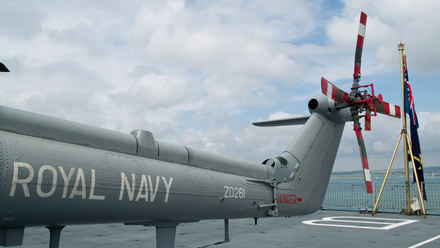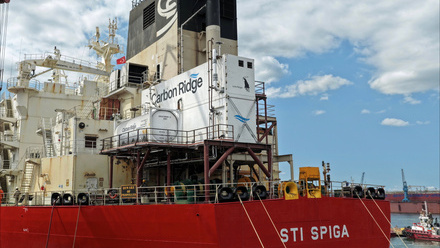Decarbonisation: reducing risks by moving first
Professor Tristan Smith FIMarEST of University College London (UCL) played a central role as the IMarEST’s representative to the IMO during the development of its draft greenhouse gas emissions targets. The deal may not have gone through yet, but the industry still needs to decarbonise if it is to play its part in easing the climate crisis. Here, he explains how his research suggests that early adopters will have better long-term business outcomes, as well as who is likely to move first.
First, let’s set out some absolutes. What do we already know? Firstly, the sector has a huge challenge to decarbonise, or likely face increasing financial consequences. But industry is moving too slowly, meaning there is going to be a huge race once regulations are, eventually, implemented. Our research suggests that 2030 could be the tipping point for hydrogen-derived fuels to clearly emerge in the shipping industry, but there is a lot to do before then.
Another near certainty is that research shows that ammonia makes the most financial sense. There has already been great progress at the IMO to resolve the safety and environmental risks associated with ammonia, and, economically, it is the fuel that is likely to rapidly become the most competitive choice through the 2030s. For example, the economics very clearly show that if half the sector is running on ammonia in the 2040s, then fleets still running on methanol or LNG are expected to have a 30 to 50 percent higher cost of operating. That is a gap that is not commercially sustainable.
That forecast is stark, so why are people not jumping on the ammonia bandwagon as fast as they can? At UCL's Energy Institute, I work in a multidisciplinary team of engineers, scientists, technologists and economists who are trying to answer these types of questions.
And, like so many other areas of life, the answer seems to lie in human behaviours and our attitude to risk.
Understanding what drives breakthrough innovation and early adoption isn’t straightforward, but we’ve distilled the key enablers into a few salient points.
Progressive investment
When governments make transition part of their industrial strategy, and then invest in those changes, we can see some powerful shifts happen.
A useful case study is the LNG transition, which saw Scandinavian economies, particularly Norway and Sweden, take the lead through progressive investment across the value chain. This included research and development through to the deployment of LNG as a marine fuel, as well as developing enabling national policy. Our team asked what made that transition possible, and how could similar conditions be created to accelerate low-carbon alternatives?
Much of this work was led by my colleague, Domagoj Baresic, who explored the conditions for innovation. What emerged was a core insight that successful transitions begin by creating an environment where early adopters can thrive.
In Scandinavia, several key factors aligned. There was geographical suitability such as numerous fjord crossings that require smaller vessels, which lowered the capital cost of retrofitting or investing in LNG technologies. Norway also had abundant domestic gas resources, an excellent base in engineering and other skills, and a strong industrial policy tradition.
Together, these factors allowed them to develop the fuel infrastructure, gain early buy-in from class societies for safety case approvals, and mobilise a supportive industrial base.
We’re now seeing Scandinavian firms leading the way again. For instance, government funding has helped Höegh Autoliners to ensure that four of its Aurora Class vessels can run fully on ammonia when they are delivered in 2027.
Existing carriers
Another obvious group of early adopters are those already carrying cleaner fuels as cargos, allowing fleets to start with the fewest barriers and the smallest cost of entry.
It’s comparatively easier for a vessel to use its cargo as fuel, than to start from a blank piece of paper. It also simplifies some of the crewing and means fleets remove, or significantly reduce, the energy supply chain, such as bunkering. So, it's an easy win and one we’ve already seen starting to happen with firms such as Exmar and BW Group, which are both making early investments into an ammonia fuelled and ammonia capable fleets.
We’ve also already seen this transition in the LNG sector. A lot of that transition was driven by those using LNG as a cargo and then starting to burn the cargo as a fuel. So, in theory this should be an easy one to achieve for ammonia carriers. The fuel is already on board and the crews have the skills needed to handle the fuel.
High-value cargos
A clear opportunity lies with vessels transporting high-value goods, where the cost of shifting to zero emissions shipping is small in comparison to the value of the product. Consumers of high-value goods are also often far more willing to pay a premium for carbon-neutral products. For cargos such as iPhones or IKEA furniture, sustainability can be part of the marketing.
For a portion of shipping, this is an important driver and one that shouldn’t be ignored. For example, ZEMBA (the Zero Emissions Maritime Buyers Alliance) at the Aspen Institute has been doing excellent work exploring how 'buyer influence', particularly from large retailers and brands, can accelerate decarbonisation in shipping
ZEMBA put out an initial tender, from a consortium of retailers, for 600,000 TEUs of cargo to be moved with a 90% lower greenhouse gas intensity than conventional fuels. The tender was won by Hapag Lloyd in 2024 and there is now a further round of tendering. It’s a space I continue to follow closely.
Geographical advantages
Another important factor is the emergence of nations that have a hydrogen advantage, usually places with high sun or wind that have good existing maritime infrastructure. Over a decade ago, countries like Australia and Chile recognised this opportunity and began developing national hydrogen strategies. In many cases, private companies followed suit, seizing the chance to develop infrastructure around these rich natural resources.
We studied these early movers and examined the trade flows in and out of such countries. The next logical step was to ask which vessels operate regularly between these hydrogen-rich regions and could realistically support early fuel infrastructure?
At first glance, container lines seemed likely candidates, and they come with the added benefit of moving high value cargos. But in practice, these vessels often call at a dozen or more ports in a single loop, making consistent fuel access a logistical headache during early infrastructure rollout.
Whilst much of global shipping behaves like taxis of the sea, constantly roaming between ports, there's a crucial subset that operates like fixed-route buses, and that's where early adoption is most viable. The most promising candidates are ships on tight, predictable routes. These types of services operate between just two ports with known infrastructure needs, allowing vessel design and refuelling to be optimised.
This is starting to happen. For instance, BHP has recently signed contracts for the charter of two ammonia dual-fuelled Newcastlemax bulk carriers to be used on the Australia to China iron ore route. The new vessels to be built under this arrangement will be two of only a handful of vessels in the world capable of using ammonia as a marine fuel.
Diversified value chains
A particularly interesting scenario lies with multinational companies that operate vessels, and trade commodities, across multiple markets. For firms like this, the incentive to decarbonise isn’t solely driven by client pressure on the shipping side. Instead, they can evaluate carbon impact across the entire value chain, from sourcing to delivery, and identify the lowest-cost pathways to reduce emissions, even when transporting lower-value commodities.
A great example is the Japanese company Itochu, which is active in a range of collaborations for use of ammonia as a fuel including ordering the first ammonia bunker barge. This company has the flexibility and breadth of portfolio to give it multiple advantages in an energy transition, allowing it to experiment with low-emission fuels or vessel technologies sooner than a business purely focused on owning and operating ships. It's a model that highlights the strategic advantage of integration, and one that may prove essential in accelerating change whilst market signals alone are too weak.
Disruptors
History shows us that individual disruptors can reshape entire industries, just think Steve Jobs and the iPhone, or Elon Musk and Tesla. And while shipping has long been seen as a traditional, risk-averse sector, we’re starting to see leaders emerge with a ‘let’s do this’ mindset. Alex Saverys at CMB is one such example of a leader willing to take bold action and push boundaries.
While rare, this kind of leadership can rapidly shift the landscape and, in combination with other factors, can enable the conditions for change.
Key takeaways
So, what is the point of all this theory? I hope it will help companies identify whether they are in a position to move first. The evidence clearly shows that the transition to renewable energy is well underway, that it will be disruptive, and those that get ahead of the game are likely to be the winners.
Interestingly, predictions we made about early adopters four years ago have broadly materialised and whilst there is now higher uncertainty, 2030 could still be a tipping point when alternative fuels in shipping clearly emerge and send a clear signal to the mass market.
This means that companies that have not become early adopters need to start preparing now to be fast followers, or risk being left behind.






